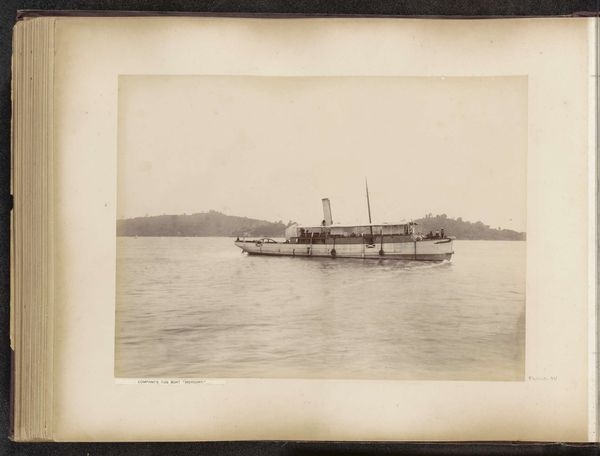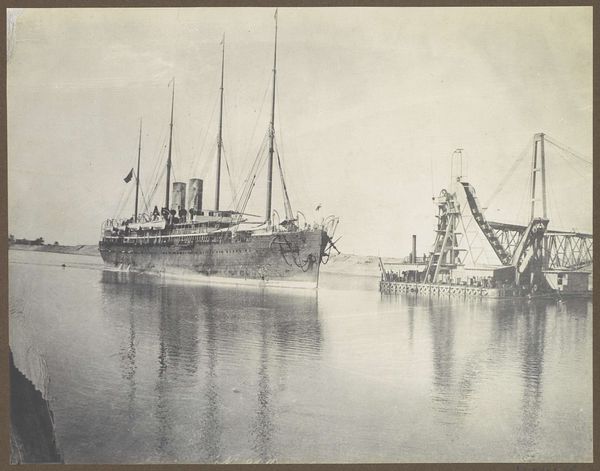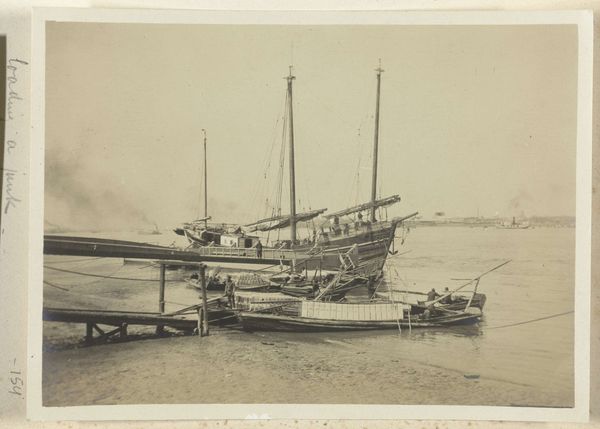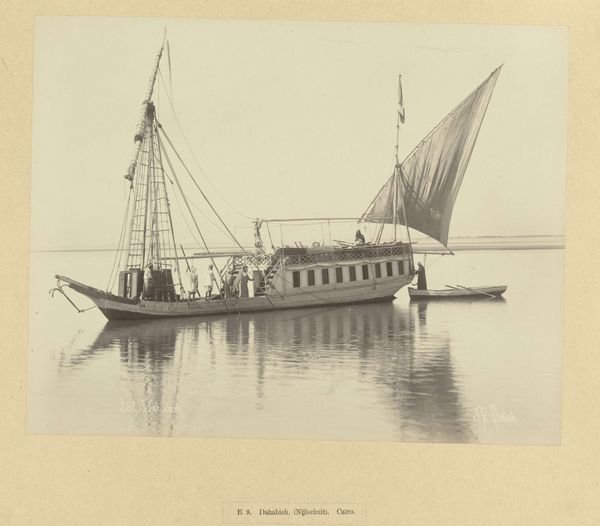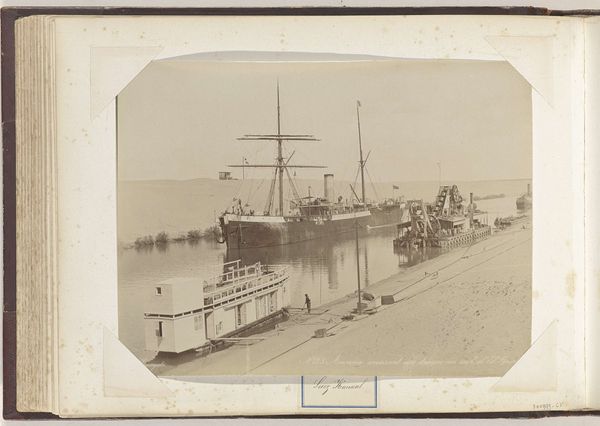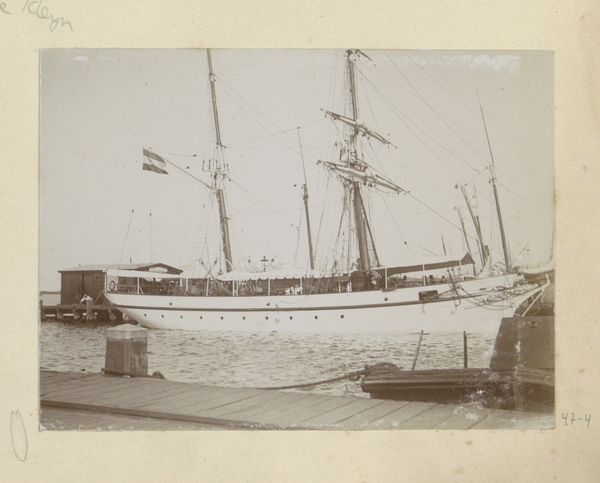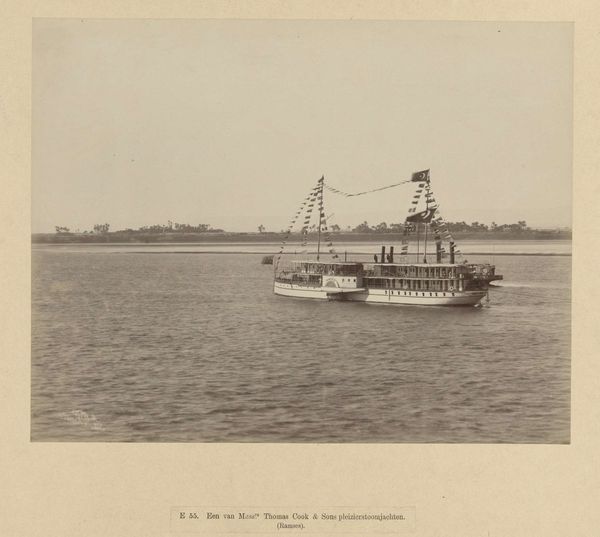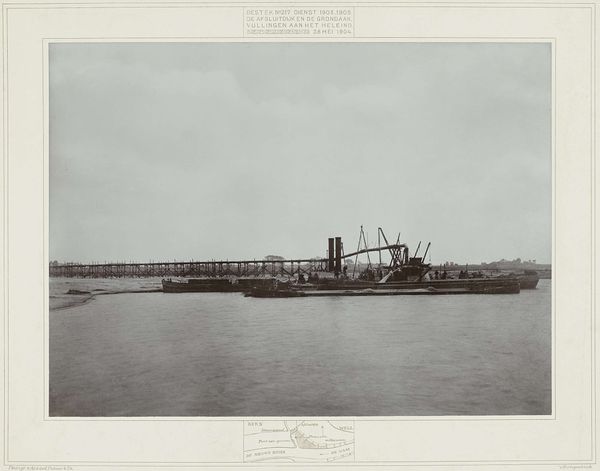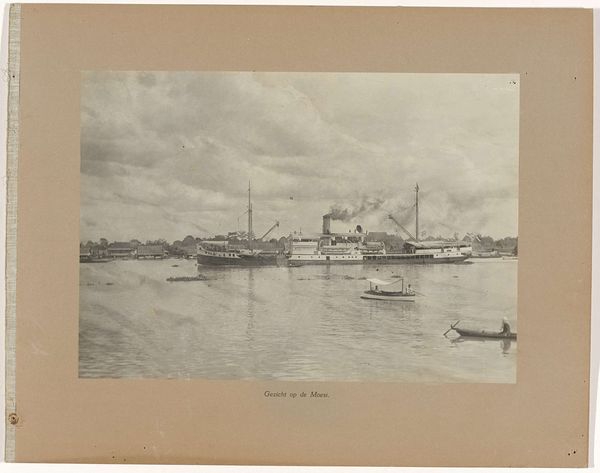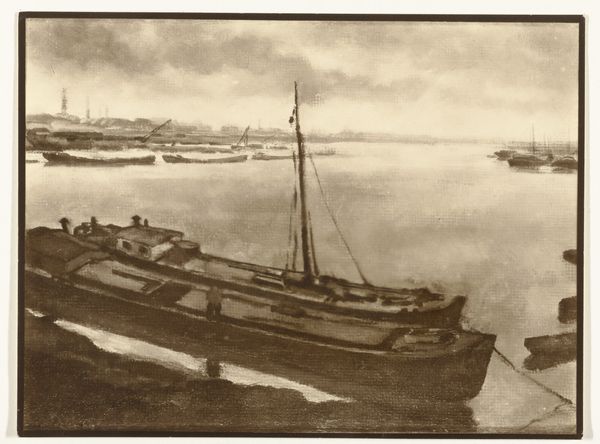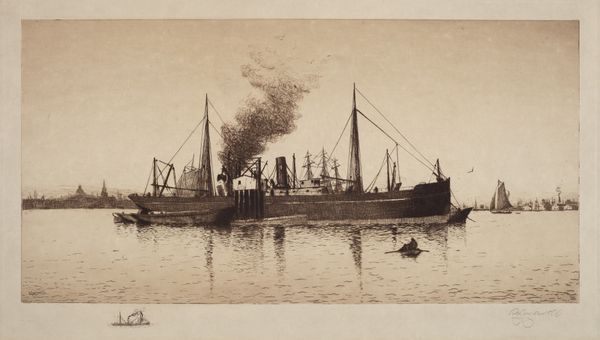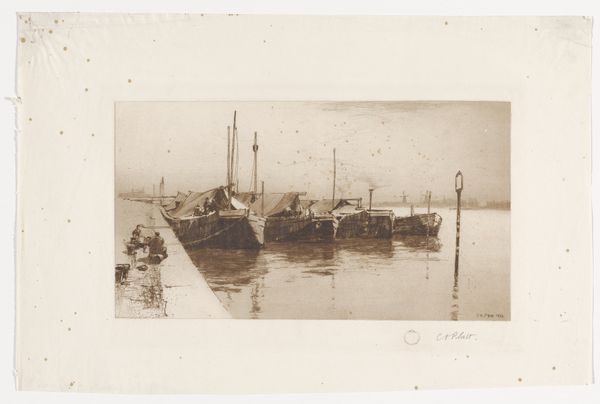
photography, albumen-print
#
landscape
#
ancient-egyptian-art
#
photography
#
orientalism
#
albumen-print
Dimensions: height 222 mm, width 278 mm
Copyright: Rijks Museum: Open Domain
Editor: Here we have "Passagiersboot (dahabie) op de Nijl," or "Passenger boat (dahabiya) on the Nile," by Maison Bonfils, an albumen print from sometime between 1870 and 1898. There's a definite sense of stillness here. The muted sepia tones give the impression of timelessness. What strikes you most about its composition? Curator: I'm immediately drawn to the juxtaposition of the boat's rigid, geometric structure against the soft, organic forms of the surrounding landscape. Observe how the strong diagonal of the riverbank anchors the image, creating a visual tension with the verticality of the boat's masts. Note also the tonal range and how the highlights articulate spatial volume while grounding the darker registers. Editor: The contrast you pointed out is really compelling. The lines of the boat create a clear sense of depth against what could otherwise be a very flat plane of the river. What does this contrast say about the interplay between man and nature here? Curator: Precisely. That linear perspective is deliberately constructed by Bonfils, guiding the viewer's eye and thus the viewer's mind. In its simplest rendering, the river exists simply to mirror that intention; however, on closer viewing, that intention exists to dominate that naturally available plane. Editor: It almost feels like a commentary on imposing order, rather than harmony. Is it something to do with a "capturing" or "taming" of the orient, as Orientalism sometimes suggests? Curator: Yes. As the Formalist lens suggests, we are free to read between those carefully constructed, structural lines. One can interpret the geometric ordering of the boat not merely as documentation, but as an indication of a western mindset towards the region—as an example of the urge to categorize, manage and therefore understand a foreign terrain. Editor: Thank you. Now, when I look at this piece, I appreciate that photography is a way of communicating more than what the eye might expect from it. Curator: Absolutely. Through that same understanding, hopefully you now appreciate the critical possibilities inherent to formal construction.
Comments
No comments
Be the first to comment and join the conversation on the ultimate creative platform.
